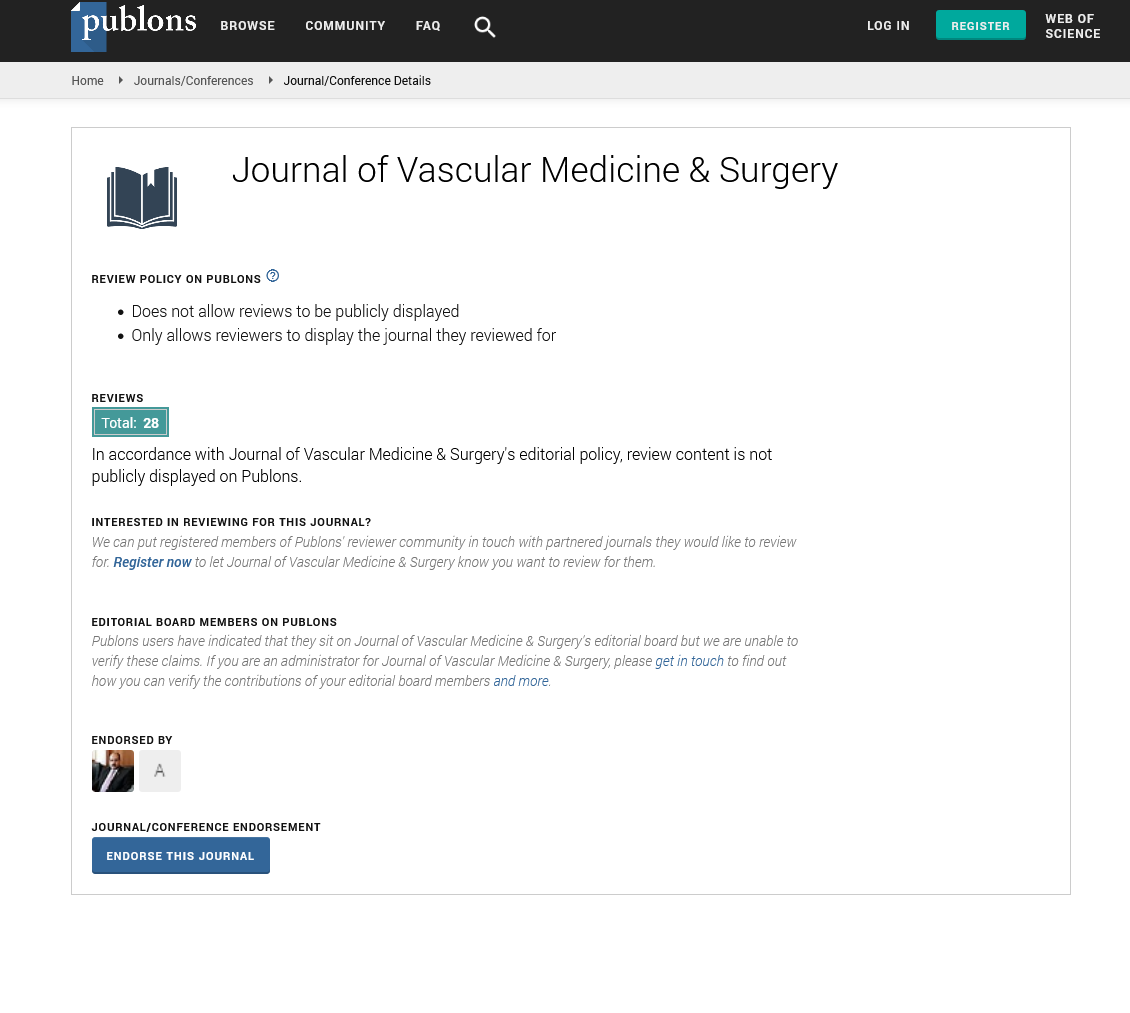Indexed In
- Open J Gate
- Academic Keys
- RefSeek
- Hamdard University
- EBSCO A-Z
- OCLC- WorldCat
- Publons
- Euro Pub
- Google Scholar
- SHERPA ROMEO
Useful Links
Share This Page
Journal Flyer

Open Access Journals
- Agri and Aquaculture
- Biochemistry
- Bioinformatics & Systems Biology
- Business & Management
- Chemistry
- Clinical Sciences
- Engineering
- Food & Nutrition
- General Science
- Genetics & Molecular Biology
- Immunology & Microbiology
- Medical Sciences
- Neuroscience & Psychology
- Nursing & Health Care
- Pharmaceutical Sciences
Opinion Article - (2025) Volume 13, Issue 5
Closing the Gap: Why Guideline Adherence in Heart Failure Treatment Must Improve Now
Osuman Ayu*Received: 14-Apr-2025, Manuscript No. JVMS-25-29207; Editor assigned: 16-Apr-2024, Pre QC No. JVMS-25-29207(PQ); Reviewed: 30-Apr-2025, QC No. JVMS-25-29207; Revised: 07-May-2025, Manuscript No. JVMS-25-29207(R); Published: 14-May-2025, DOI: 10.35248/2329-6925.25.13.566
Description
Heart Failure with Reduced Ejection Fraction (HFrEF) represents a persistent and growing burden on global health systems, particularly in low- and middle-income countries such as Ethiopia. Despite decades of evidence supporting Guideline-Directed Medical Therapy (GDMT), adherence remains distressingly low in real-world practice. This ongoing disconnect between evidence and execution is not merely a matter of suboptimal care — it is a public health crisis that demands immediate attention.
HFrEF is characterized by the impaired ability of the heart to pump blood effectively, leading to symptoms such as dyspnea, fatigue and fluid overload. Clinical guidelines supported by large-scale randomized trials recommend the combined use of ACE inhibitors or ARNI, beta-blockers, Mineralocorticoid Receptor Antagonists (MRAs), and, more recently, Sodium-Glucose Cotransporter-2 (SGLT2) inhibitors. These medications, when properly initiated and titrated, reduce mortality, prevent hospitalizations and improve quality of life. Yet in practice, these therapies are often under-prescribed, incorrectly dosed, or altogether omitted.
The reality of non-adherence
Multiple studies across diverse healthcare systems reveal that only a minority of eligible patients receive all recommended therapies at target doses. In Ethiopia, where access to cardiology specialists and diagnostic services remains limited, the situation is especially critical. Local research shows a frequent omission of beta-blockers — one of the most impactful medications in the heart failure arsenal — as well as poor titration practices even when medications are initiated.
The reasons are multifactorial. On the provider side, challenges include lack of familiarity with evolving guidelines, limited training in cardiology, time constraints and the absence of standardized care pathways. Systemic issues such as inadequate follow-up infrastructure, medication stock-outs and fragmented care coordination exacerbate the problem. On the patient side, adherence is hindered by financial hardship, low health literacy, medication side effects and complex comorbidity profiles.
The implications of poor adherence are severe. Suboptimal GDMT correlates with higher rates of hospitalization, readmissions, symptom progression and mortality. These poor outcomes not only diminish individual quality of life but also impose unnecessary strain on healthcare systems, especially in resource-constrained environments already grappling with workforce shortages and limited facilities.
Bridging the gap: Solutions for sustainable change
Improving adherence to GDMT in HFrEF is both a clinical imperative and an achievable goal. A comprehensive strategy must engage healthcare professionals, policymakers and communities to address the systemic barriers undermining effective care delivery.
Ongoing education and skills development for healthcare providers is essential. Targeted programs in guideline-based heart failure management, including workshops, e-learning modules and clinical mentorships, should be prioritized. These efforts must focus not only on medication initiation but also on titration strategies, side effect management and patient communication.
Where possible, dedicated heart failure clinics should be established within hospitals and primary care settings. These multidisciplinary teams comprising cardiologists, pharmacists, nurses and educators are proven to enhance GDMT uptake and patient outcomes. In regions without cardiologists, task-shifting models using trained general practitioners and clinical pharmacists can bridge care gaps.
Essential medications must be consistently stocked and affordable. Partnerships between ministries of health, international organizations and pharmaceutical suppliers are necessary to streamline procurement and subsidize costs. National essential medicines lists should include all four major drug classes recommended for HFrEF.
Patient-centered education is vital. Individuals must understand the chronic nature of heart failure, the purpose of each medication and the importance of adherence. Tools such as pictorial dosing guides, local-language instructions and group counseling can be effective, especially in low-literacy populations.
Technology can enhance adherence and monitoring, even in under-resourced settings. Mobile apps and SMS reminders can help with medication schedules. Electronic medical records with built-in alerts can prompt clinicians to optimize GDMT. Telemedicine platforms may allow remote titration support, especially valuable for rural populations.
Conclusion
The disconnect between clinical guidelines and real-world treatment of heart failure with reduced ejection fraction is both alarming and preventable. While the pathophysiology of HFrEF is complex, the solutions to improving care are straightforward implement evidence-based therapies systematically and consistently.
Heart failure outcomes can be transformed with the tools we already possess. The scientific evidence is clear. Now is the time to act not just to extend lives, but to enhance them. Closing the guideline adherence gap is no longer optional; it is essential for creating equitable and effective cardiovascular care systems worldwide.
Citation: Ayu O (2025). Closing the Gap: Adherence in Heart Failure Treatment. J Vasc Surg. 13: 566
Copyright: 2025 Ayu O. This is an open-access article distributed under the terms of the Creative Commons Attribution License, which permits unrestricted use, distribution and reproduction in any medium, provided the original author and source are credited

